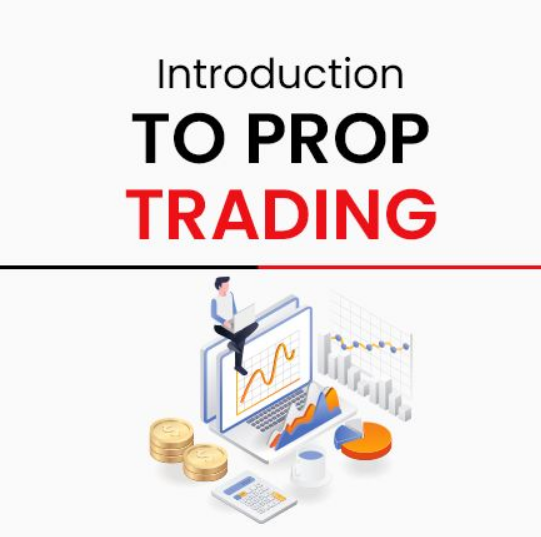Automated Backtesting Tools for Prop Trading Success
Prop trading firms and individual traders alike depend on cutting-edge technology to test and refine their strategies. In today’s fast-paced markets, automated backtesting tools have become essential for ensuring that trading algorithms are robust and effective. This comprehensive guide is designed specifically for prop traders, offering actionable insights and detailed comparisons of premier backtesting platforms. Whether you are an advanced trader or firm owner, you will gain in-depth knowledge on optimizing your trading strategies with performance-driven software.
Introduction to Prop Trading and Automated Backtesting
Proprietary trading, or prop trading, involves using a firm’s capital to trade in the markets, often employing sophisticated algorithms and high-speed execution. Automated backtesting tools are software solutions that allow traders to simulate trading strategies using historical data. The benefit is clear: you can test, refine, and optimize your trading models without risking actual capital. For front-running prop trading firms, these tools are indispensable for verifying the robustness of strategies before they are deployed in live environments.
This article will delve into the benefits of automated backtesting tools in prop trading, discuss prominent platforms, and offer actionable advice to empower your trading strategies. We will also highlight the latest technological trends to help you stay ahead of the curve.
Understanding the Role of Automated Backtesting in Prop Trading
Automated backtesting is a process where trading algorithms are validated by simulating them on historical market data. For prop trading professionals, this is important to eliminate inefficiencies in strategy design, thereby reducing risk and increasing profitability. The main benefits include:
- Risk Management: Identify and mitigate potential pitfalls before live deployment.
- Strategy Optimization: Optimize parameters for better performance under varying market conditions.
- Time Efficiency: Rapidly test multiple scenarios across different time frames.
Key Criteria for Choosing a Backtesting Tool
When selecting automated backtesting tools for prop trading, consider factors such as compatibility with live trading platforms, ease of customization, historical data integrity, and cost-effectiveness. It is essential to integrate tools that complement your existing trading environment. Here are some highly recommended platforms:
- TradingView: Known for its intuitive interface and vast community-driven scripts, TradingView is excellent for visual charting and basic backtesting. Its social features make it ideal for interactive trading discussions.
- NinjaTrader: Offering advanced charting, market analytics, and customization capabilities, NinjaTrader is a robust tool favored by many prop traders. It excels in automated strategy development and optimization.
- MetaTrader 5: With its multi-threaded strategy tester, MetaTrader 5 provides fast and efficient backtesting. Its support for complex trading algorithms makes it suitable for both retail and professional prop trading environments.
- QuantConnect: Perfect for quantitative analysis, QuantConnect integrates with various data sources and offers extensive customization for algorithmic models. It is particularly noted for its open-source framework.
Comparing Automated Backtesting Platforms
Below is a comparative table that highlights key features, strengths, and best use cases for leading automated backtesting tools in the prop trading domain:
| Platform | Strengths | Best Use Case | Unique Features |
|---|---|---|---|
| TradingView | Intuitive interface, social trading | Visual charting and analysis | Community-driven scripts, extensive library |
| NinjaTrader | Advanced analytics, customization | High-frequency and algorithmic trading | Support for automated strategy development |
| MetaTrader 5 | Efficient backtesting engine | Retail and professional trading | Multi-threaded testing capabilities |
| QuantConnect | Quantitative analysis, flexibility | Complex algorithmic strategies | Open-source, supports multiple asset classes |
Each platform has its particular advantages. For example, if you’re seeking an interactive community and easy-to-use charting tools, TradingView would be a great starting point. NinjaTrader stands out for intricate customization and robust analytics, while MetaTrader 5 is well-suited for high-speed backtesting. QuantConnect, with its open-source model, caters to advanced quantitative traders looking for flexibility and depth.
Best Practices for Backtesting Strategies in Prop Trading
Ensuring accuracy in backtesting is paramount for prop trading. Here are some best practices to consider:
- Data Quality: Use reliable and updated historical data to simulate realistic market conditions.
- Parameter Optimization: Systematically test and adjust your trading strategy parameters to find the optimal configuration.
- Walk-Forward Analysis: Validate your model’s performance by splitting data into in-sample and out-of-sample segments.
- Risk Simulation: Incorporate scenarios that replicate potential market shocks to assess risk tolerance.
By adopting these practices, prop trading professionals can gain greater confidence in their models, reducing the likelihood of unexpected losses when moving to live trading environments.
Implementing Automated Backtesting in Your Prop Trading Workflow
Incorporating automated backtesting into your trading workflow involves several crucial steps. Below is a detailed guide to help prop traders seamlessly integrate these tools:
Step 1: Define Your Trading Strategy
Before testing any algorithm, clearly articulate your trading strategy. This includes defining entry and exit conditions, risk parameters, and key performance indicators (KPIs) such as the Sharpe ratio, win rate, and drawdown limits. A clear and concise strategy forms the backbone of any successful backtesting campaign.
Step 2: Choose the Right Backtesting Tool
Select the platform that best aligns with your needs. Consider the following factors in your evaluation:
- Compatibility: Ensure the tool supports your trading instruments and desired markets.
- User Interface: A user-friendly interface can simplify the testing process.
- Customization: Look for flexible settings that allow you to mimic real-time trading conditions.
- Community & Support: Access to active user forums and customer support can be invaluable.
Step 3: Run Comprehensive Backtests
After configuring the parameters, conduct extensive tests using historical data. Utilize tools like MetaTrader 5’s multi-threaded testing feature or QuantConnect’s open-source framework to run simulations across various market scenarios. Monitor outcomes against your predefined KPIs and adjust strategies as required.
Step 4: Analyze and Refine
Once you have executed your backtests, analyze the results thoroughly. Identify any discrepancies or unexpected performance issues. Review the data and refine your algorithms to better simulate market conditions. Look for patterns and anomalies in the testing outcomes to improve your risk management and optimize performance.
For further optimization, consider integrating additional tools such as NinjaTrader for its advanced analytics or TradingView to leverage community insights. This multi-tool approach can provide a comprehensive view and enhance the robustness of your trading strategies.
Common Challenges and How to Overcome Them
While automated backtesting tools provide immense value, there are some challenges that traders may face:
- Data Overfitting: Excessively tailoring your model to historical data might hinder its performance in live markets. Employ walk-forward analysis to counteract this.
- Computational Limits: High-frequency data can be computationally expensive. Choose platforms that offer efficient processing and parallel testing capabilities like MetaTrader 5.
- Market Anomalies: Historical data may not always account for unprecedented market events. Always maintain a margin for error in your risk assessments.
Addressing these challenges head-on with robust methodologies and flexible tools will help you maintain a competitive edge in prop trading.
Conclusion and Next Steps
The integration of automated backtesting tools into prop trading strategies offers profound benefits—from fine-tuning trading algorithms to managing risks effectively. By leveraging platforms like TradingView, NinjaTrader, MetaTrader 5, and QuantConnect, traders can gain clearer insights and a more robust approach to algorithmic trading. The detailed process outlined in this guide should equip you with the necessary frameworks to evaluate, test, and refine your trading strategies reliably.
As a prop trading professional, your next step is to implement these tools and techniques into your daily workflow. Consider exploring our Advanced Prop Trading Strategies and Prop Trading Risk Management articles for further insights and practical tips.
Ready to maximize your trading potential? Download our free checklist on backtesting best practices and sign up for our upcoming webinar to deepen your understanding of prop trading techniques. Your journey to more efficient and profitable trading starts now.
We hope this guide has provided you with actionable insights and practical strategies to enhance your prop trading approach. Stay innovative, remain analytical, and let technology drive your trading success.







